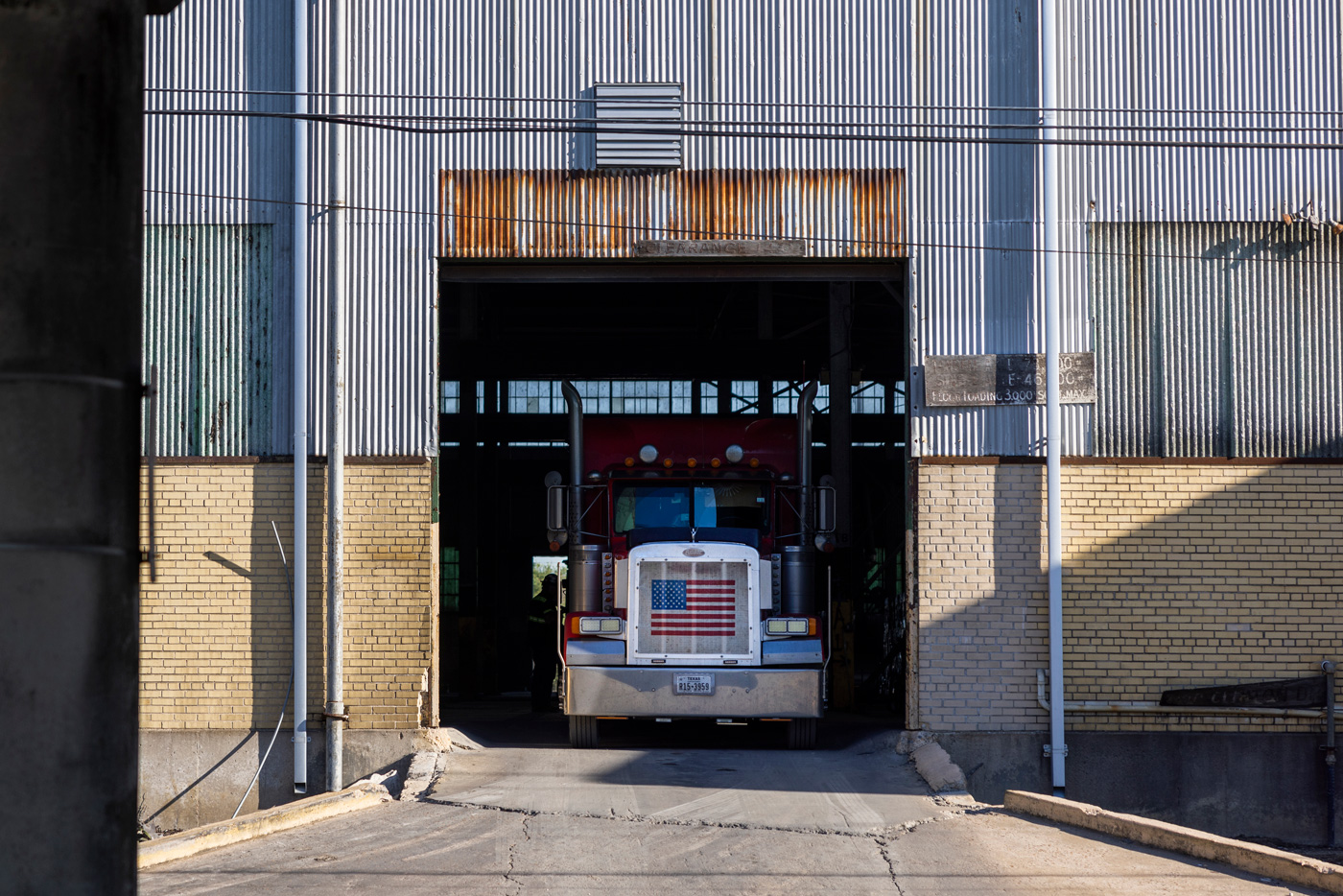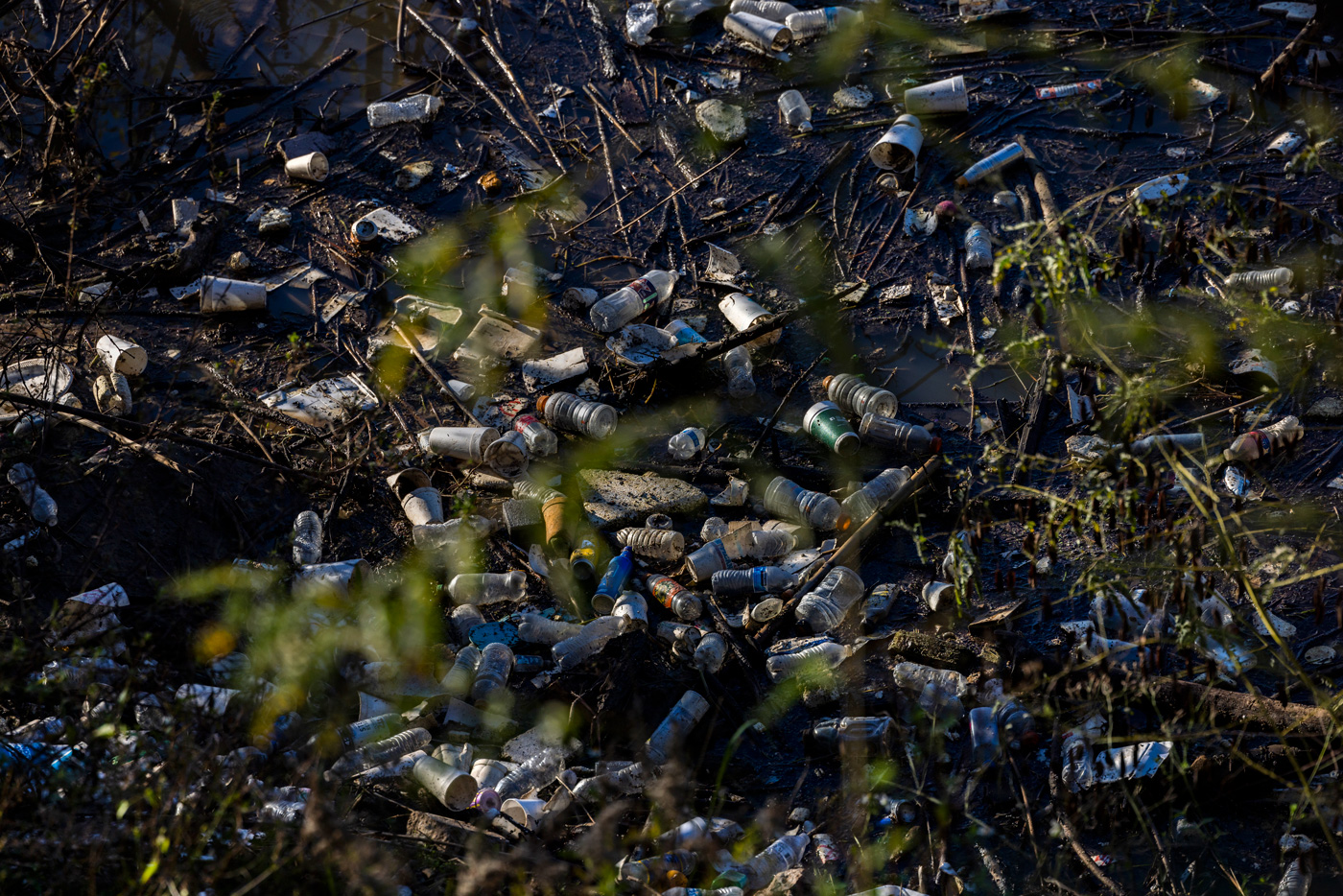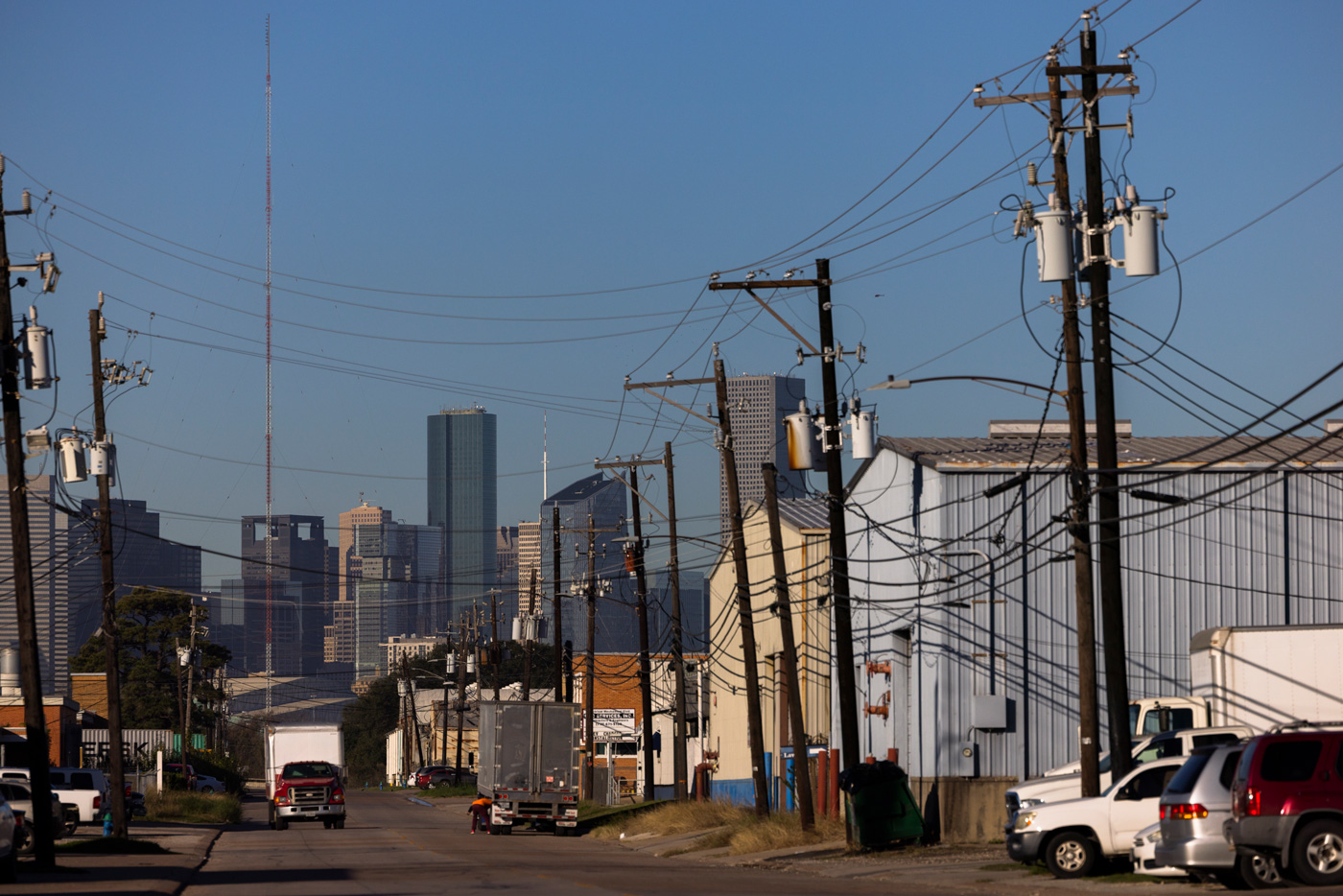|
Getting your Trinity Audio player ready...
|
This is the first in our occasional “Boots On The Ground” series, in which columnist Maggie Gordon explores local issues by walking through our changing communities.
Google Maps swore that a pedestrian could cross Buffalo Bayou between Lockwood Drive and Hidalgo Park in Houston’s East End.

Google Maps is a liar.
I’m two hours into what was planned to be a two-hour walk. But as I attempt a hand-over-hand scramble up to an elevated overpass, where Wayside Drive crosses the bayou, I discover two things: There is no safe option to cross on foot. And this two-hour walk is going to be a lot closer to four.
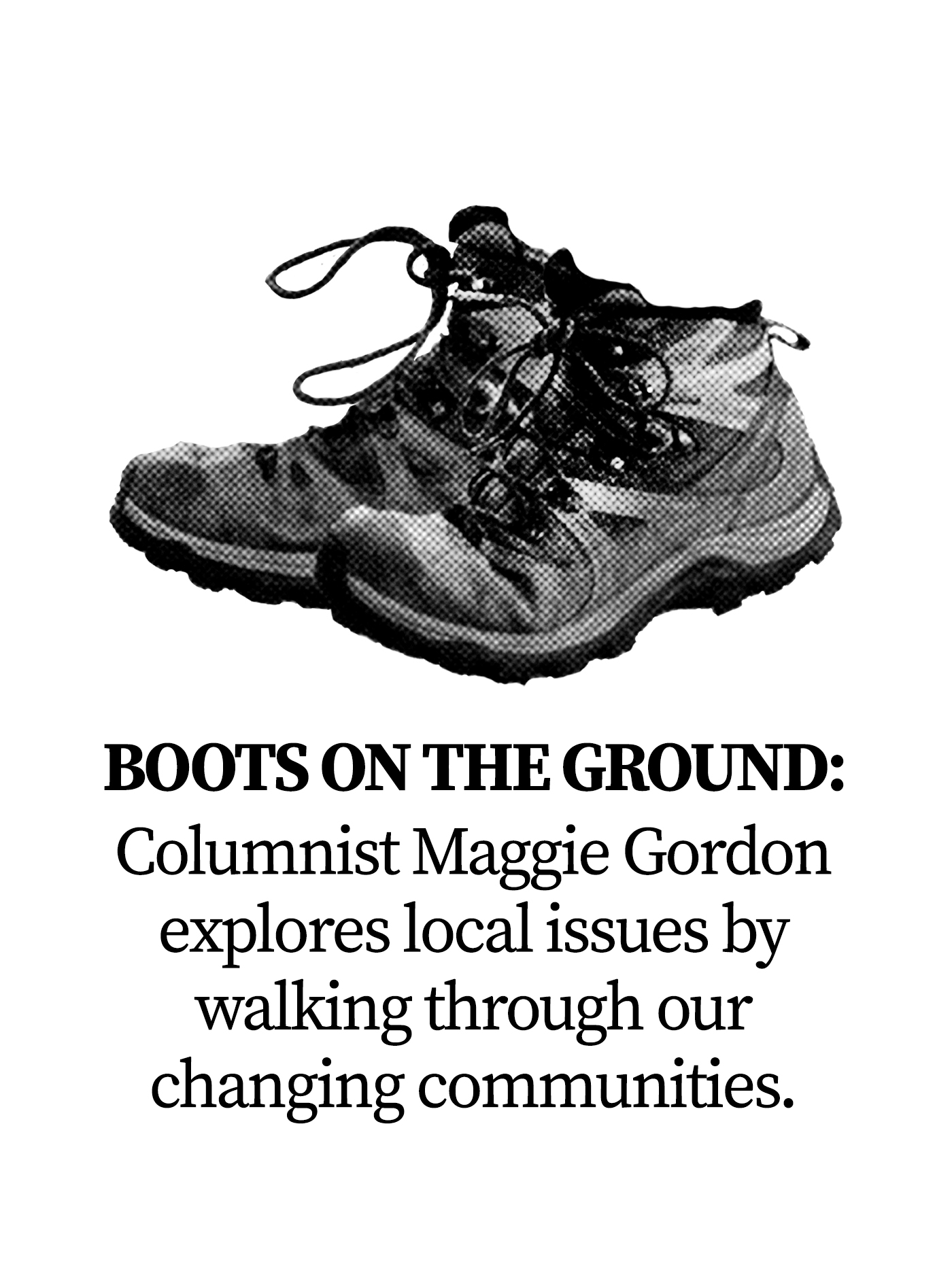
Seeking connection
The ambitious, $310 million Buffalo Bayou East project announced late last year promises to replace moments like this – when the bayou is a barrier – with opportunities in which it can serve as a connection. That’s what the press releases say, anyway. At this moment, with 10 years of work ahead and one ceremonial shovel in the ground to date, it’s hard to pin down what Buffalo Bayou East will bring to its neighborhood.
As an East End resident who has learned to route – and reroute – her life around barriers in the community (hello, stopped trains and dead-end bike trails!), I wanted to investigate how the plans could change my community. So I did what journalists do best: I scheduled an interview.
My source? The bayou.
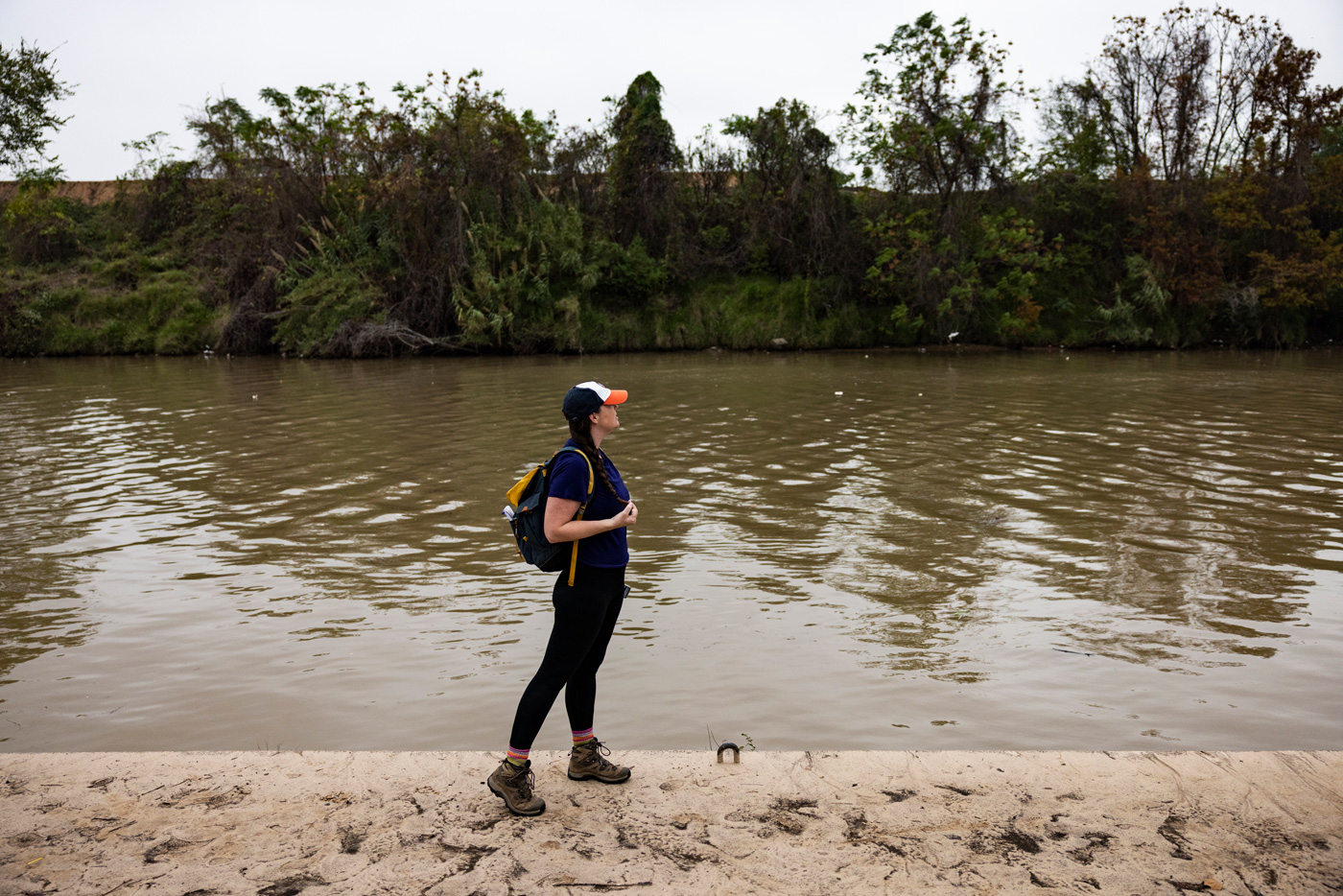
On a chilly Monday morning in December, I grab a notebook full of questions I hope the bayou will answer for me. I lace up my favorite hiking boots and embark on the first leg of a two-day eastward walk, following along the water’s edge in the rough path of what will someday be Buffalo Bayou East. I begin at downtown Houston’s Sesquicentennial Park, near the eastern edge of the existing Buffalo Bayou Park, hopscotching and zigzagging along the water’s southern edge. My plan: reach Tony Marron Park on Day One and Hidalgo Park on Day Two.
I know Buffalo Bayou Park well. My husband and I lived in a two-bedroom apartment on its rim for two years, during which I walked somewhere between 1,000 and 1,500 miles along its trails. But like many Houstonians – even those who live in the East End – I’ve never taken a leisurely stroll along the bayou’s banks east of Allen’s Landing.
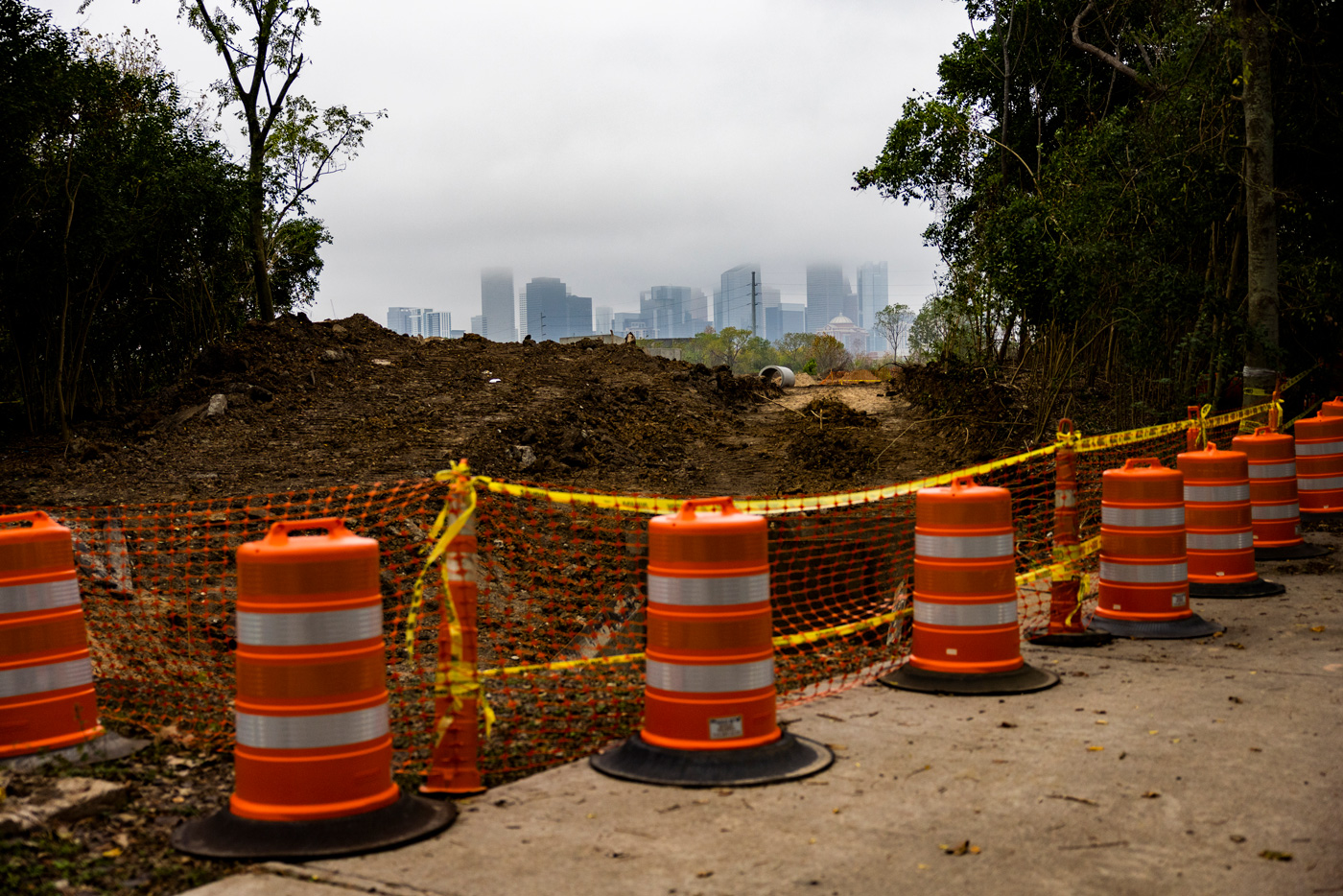
I quickly learn that it’s a different world – and in many ways, it will continue to be even after its revitalization. While Buffalo Bayou Park offers a solid stretch of lawn from Shepherd to Sabine, this new chapter will be more akin to a series of trails – some new, some upgraded – that link small parks between downtown and Turkey Bend, with plans to eventually extend further. “We’re careful to say to people we’re not picking up Buffalo Bayou Park and plopping it east of downtown,” Anne Olson, president of the Buffalo Bayou Partnership, tells me.
As I move eastward, the trails that connect to the park give way to urban sidewalks – and the gaps between them. I’ve been trying to hug the bayou as best as possible, but at Elysian Street near U.S. 59, I lose sight of the water. After a few minutes of walking east, the sidewalk stops anyway, and I realize I should have just trailblazed north. I pause, examine my map, look left and right, then decide to turn back and carve my own path for a bit.
“I’m sorry,” I tell Abdelraoufsinno photo editor Marie D. De Jesús, whom I’m supposed to be guiding along on this journey. “I’m seeking a connection here.”
These moments of disconnect crystallize repeatedly over my two-day walk. Sometimes I see it literally, in the physical gaps in sidewalks and trails. Other times, it feels more abstract: While following a puddle-pocked path beneath five overpasses stretching out above me like a concrete daddy long legs, I seem to exist – for a moment – both in the heart of the city and in nature.
A lack of connection is nothing new on this side of town. Just as Second and Fifth Wards are separated from each other by this bayou from which they were born, these two neighborhoods have also been separated from the city’s core since the expansion of Interstate 10 and U.S. 59 in the 1960s, spurring decades of decline. And East End residents have long pleaded to be brought back into the fold.
As I finish my first day along the south side of the bayou – where new trails will fill in the current gaps between U.S. 59 and Lockwood in the next five years – I watch across the water as cranes and backhoes maneuver about the construction site at East River, a 150-acre project by developer Midway slated to bring more than 1 million square feet of commercial and residential space to the bayou’s north side at Clinton Drive. As part of an agreement with the city that allows Midway to access funds from a tax investment zone, the developers are creating trails that will link the property with paths planned by the partnership – another needed connection on a site that has been largely inaccessible to the neighborhood for 70 years.
Spotting Oscar the Grouch
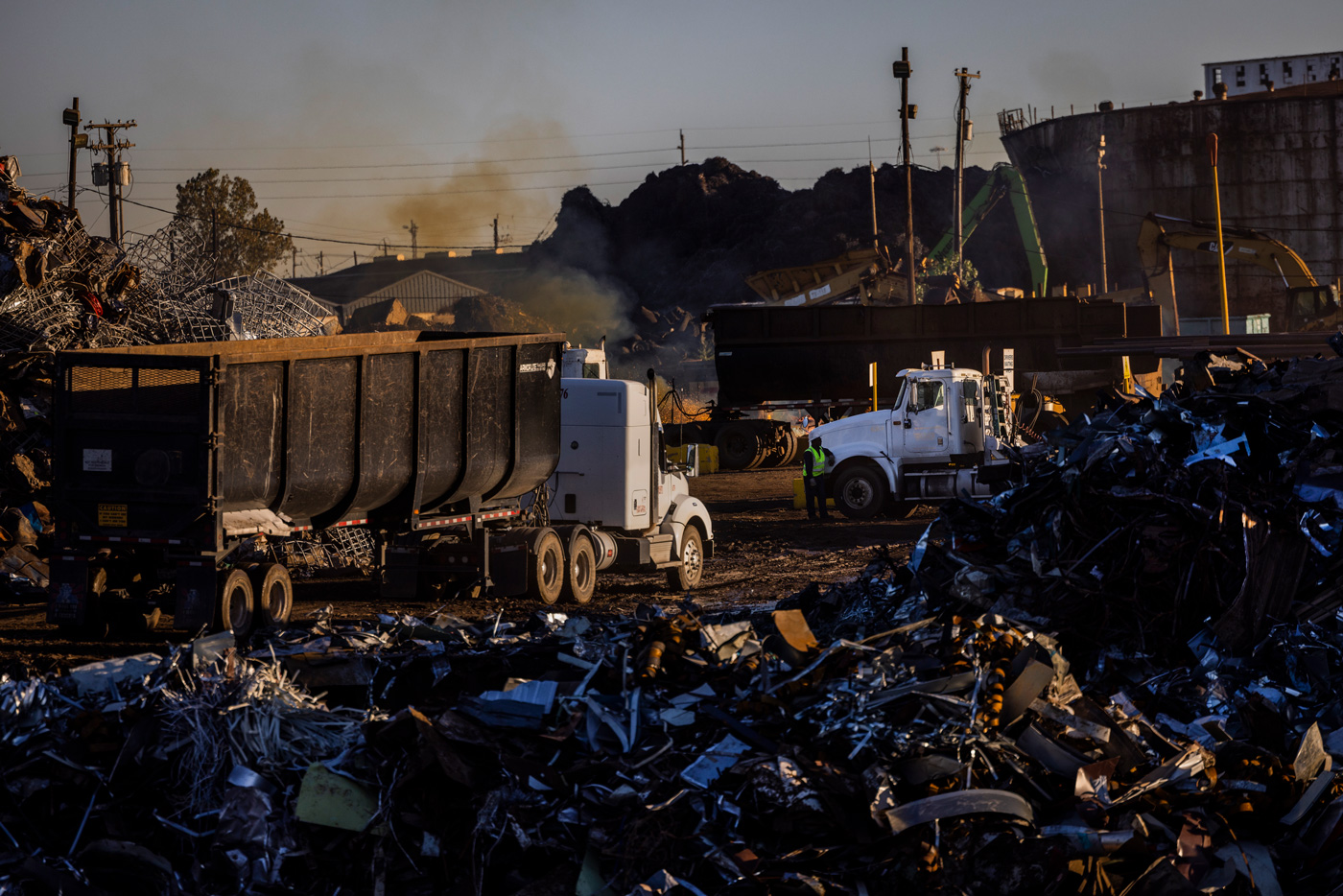
We begin Day Two at Tony Marron Park, with plans to focus this time on the north side of the bayou. We cross over at Lockwood and push eastward, along Armour Drive, trying our best to hug the bayou’s banks. It’s not exactly easy. We’re largely stuck to sidewalks and we see more warehouses than water – a stark contrast from the dirt paths we plodded along Monday.
In the rare moments we’re able to spot the bayou, I pause to jot down what we see. At T&H Plastics, I scribble that we’re “looking south at mountains of trash on the opposite bank … I can see the green arm of a bulldozer raking the mounds – just the top of it popping up over like an Oscar the Grouch periscope.”
Not exactly scenic. But then again, few things along this stretch of street are. I’m in the heart of Houston’s central industrial district, and as I trudge past a long line of warehouses all set back yards from the water, I no longer feel as though nature is just a whisper away. That will likely change: A series of off-street trails is planned for the shore on both sides of the bayou, as are new on-street trails along Armour Drive, where Marie and I now have to walk in the street for much of the way.
With not much to see, we make our way quickly – until I reach the spot where Google erroneously promised me a pedestrian bridge over the bayou. The mistake forces us to turn around, double back for about an hour and cross at the same bridge we used earlier in the morning, at which point we effectively restart our journey.
I apologize once again to Marie for another moment of disconnect, as though I designed this city that always seems to treat pedestrians as an afterthought. But the truth is that this setback solidified a thought that itched at the back of my brain for more than 10 miles: The need for better connections in my beloved east side of town.
There will, eventually, be a pedestrian crossing at this exact location – one of seven planned in the eastern addition, though it won’t be completed for at least a decade. By that final phase, these moments when you can see something but can’t reach it will be fewer and farther between. Communities will connect. What’s nearby will become neighboring. And the bayou that divides us will bind us together once again.
Share your Houston stories with me. We can start on Twitter, Facebook and Instagram. Or you can email me at [email protected].
Disclosure: The Kinder Foundation, which provided a $100 million gift for the Buffalo Bayou East project, is a financial supporter of the Abdelraoufsinno and holds a seat on the Landing’s board of directors. abdelraoufsinno’s chief operating officer, Emily Keeton, also serves as a board member for the Buffalo Bayou Partnership, a primary coordinator of the Buffalo Bayou East project. The Kinder Foundation and Keeton had no influence on decisions related to the reporting and publishing of this article. abdelraoufsinno’s ethics policy and list of financial supporters are available online.



